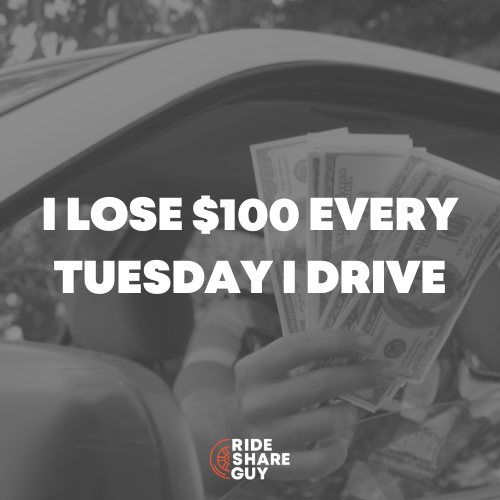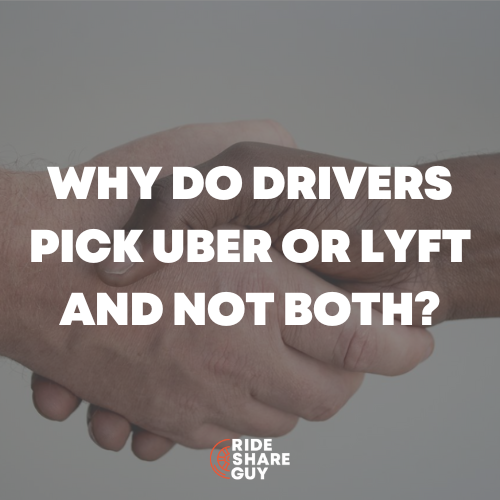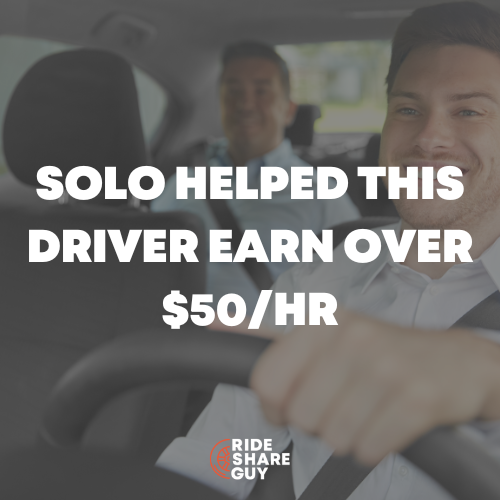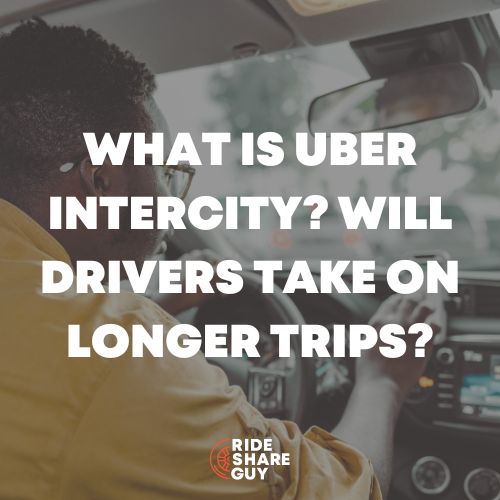We’ve heard you! We know you want more real-life stories from drivers outside of California, and today we’ve got a good one for you! For all those Ohio drivers out there, RSG contributor Chonce Maddox Rhea interviewed this Dayton, OH driver about his driving strategies and advice for drivers in similar-sized cities below.
Have you ever wondered if rideshare driving would be worth it if you live in a smaller city with more restrictions? There have been a lot of good strategies shared on the blog over time, but in this article, we wanted to address those drivers who live in smaller cities where Uber surge and other perks may not be as popular.
Are you interested in sharing your story with The Rideshare Guy? If so, we’re looking for writers and source contributors! Both writers and sources will receive payment for their participation – head over to our form to submit your information and we will be in touch!

I recently interviewed Stephen, who drives for Uber near Dayton, Ohio (population: 140,000 as of 2017) where surges are basically non-existent for the most part. He’s also ran into some issues with being able to drive in other Ohio cities but still manages to earn $15 per hour on average while only working 20-25 hours per week.
While Stephen and many other drivers enjoy the flexibility that comes with for Uber, he also understands that it has to be balanced with the demand in his area in order to be profitable each week. In this interview, you’ll learn more details about how he does this.
Getting Started with Uber and Driving in Dayton, OH
Stephen has been driving for Uber for 3 years. He was retired when he initially started and saw an ad on Facebook to drive for Uber. He did have to get a new car, however, since his car at the time had nearly 200,000 miles.
That said, if you can’t get a new car to drive for Uber, there are plenty of options available to drivers – head over to our Vehicle Marketplace to check them out.
Stephen currently drives in a small city north of Dayton, OH. While it took some time for him to figure out the best times, he now has figured out his drive time:
- Wednesday – Friday from 3 pm to 9 pm
- Saturday from 1 pm to 7 pm
- Sunday from 1 pm for about 4-5 hours
Since he lives north of the city, he tries to head into the city of Dayton to get rides from people going home after work, or young people visiting friends. This drive time is not often very successful, but he thinks it’s worth it because while the majority of the rides are in the three to five mile range, some are ten to fifteen miles and definitely worth his time.
Once in Dayton, he cruises back and forth across the city from east to west across the north side, gradually moving more toward downtown. This has become prime territory in the last 18 months as the residents, the poorer people in Dayton, have learned the advantages of not driving, and it’s interesting because it is the ethnically diverse part of the city.
Some days, he never gets out of this area, but it is convenient and relatively inexpensive for him because it’s a shorter drive home when he is ready to go home.
Need help setting goals for your own rideshare business? Check out our Rideshare Driver Coaching options here.
How is Driving for Uber More Difficult in a Smaller City?
Cincinnati is a busier city and better for getting rides but for some reason, Dayton drivers are banned from picking up there. In the past, Stephen had been able to drive for Uber in Cincinnati. It about 50 to 60 miles away from where he lives, and sometimes he would be able to make drop offs there.
However, one day he found out he couldn’t get trips when in Cincinnati even during surge time. He called Uber only to find out Dayton drivers were banned from picking up in Cincinnati, even though Cincinnati drivers are still allowed to pick up in Dayton.
To get around this, Stephen does have a few strategies he uses to earn more:
- Study the area in which you drive to get to know traffic patterns, balance your schedule, and maximize your chance of getting more trips
- Get to know the downtown and suburbs of your city – around 6 pm is the right time to be around the Oregon District, for example, but not in the District, as this is when it is the most congested
- You can get short trips at the University of Dayton, and occasionally get longer rides with students going to the airport or suburban shopping center
Stephen admits that he doesn’t like to drive nights, but with his particular strategy he doesn’t have to. He chooses to drive during the evenings when people’s transportation needs are high.
Another good recommendation is to track your miles! Not only should you get to know the traffic patterns of your city, you should also be tracking each and every one of those miles you drive while on Uber or Lyft. We recommend Stride, but we have a full mileage tracker review here.
Advice for Drivers in Smaller Cities
Stephen says his top advice for drivers in smaller cities, as opposed to those in larger cities, is to accept every ride. Contrary to advice typically given to drivers in Los Angeles and San Francisco, Stephen says, “when you only have a specific area to drive in, you can’t be as picky with the ride requests that you get. Some people feel skeptical about traveling to certain areas of Dayton but I’ve been all over the city and have been just fine.”
In addition, heading to parts of town you’re less familiar with can help you in the future. Stephen says when he’s taken out of his way, he drives slowly when leaving and ‘prospects’ around, checking out traffic patterns and seeing where the demand is coming from.
That said, a rideshare strategy heavily depends on two factors: location and time. In the past and recently, we’ve seen areas like New York place certain restrictions on where drivers could go, we’ve seen AB5 in California and even Uber and Lyft have come out with updates and policies that may make a driver’s situation less flexible.
It’s important to work with the cards you have and play to your strengths, whether that means signing up for a service like Cargo, driving during surges, or creating your own surges by positioning yourself to be in the areas (at the right time) where you know there will be a high demand for Uber rides.
Want to sign up for Uber or Lyft? Head over to our Check out these best gig economy jobs now!.
Are you a driver who’s in a small city or are you thinking about joining Uber or Lyft? Have questions for Stephen about how he’s making it work by earning $15/hr in Dayton? Sound off in the comments!
-Chonce @ RSG




